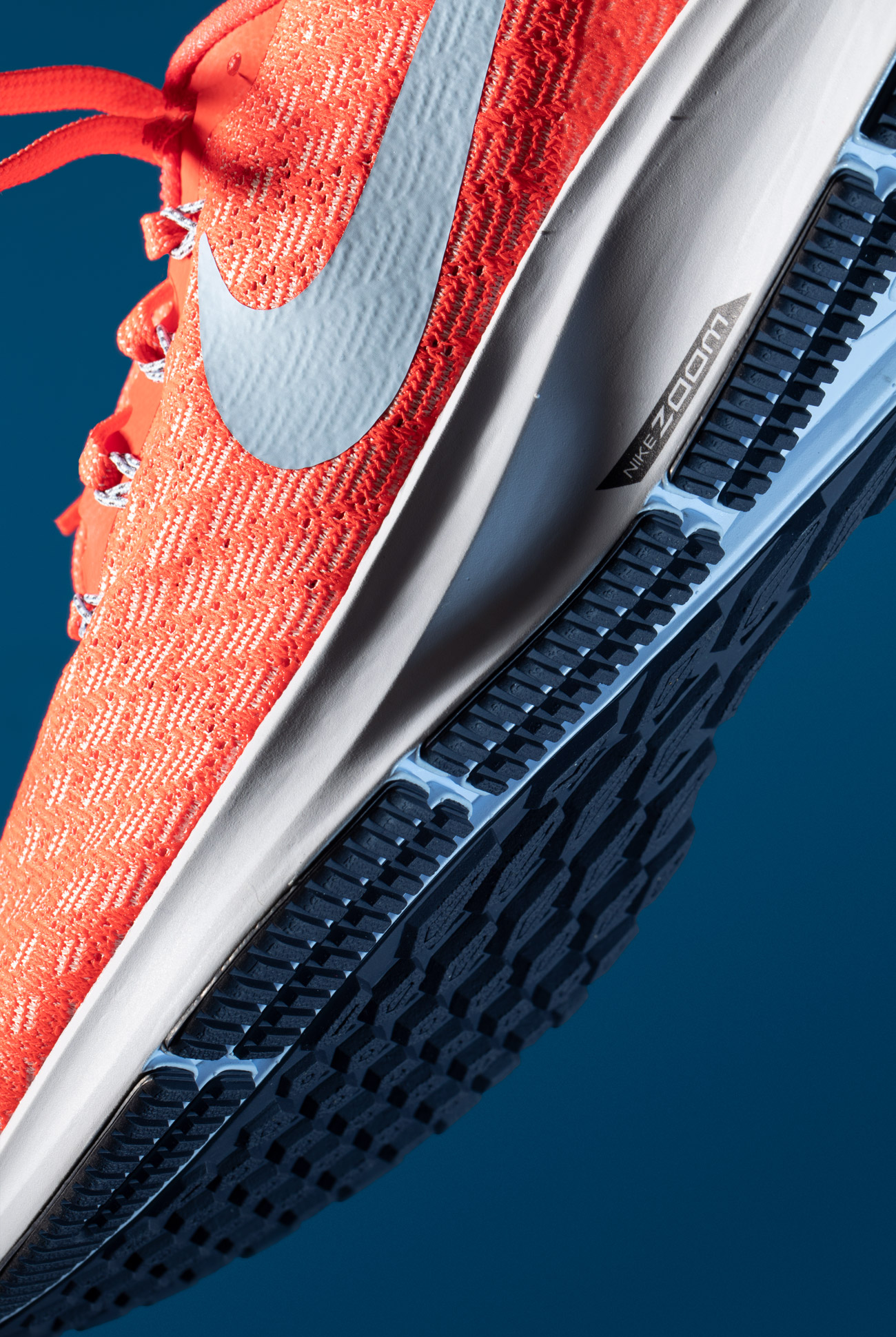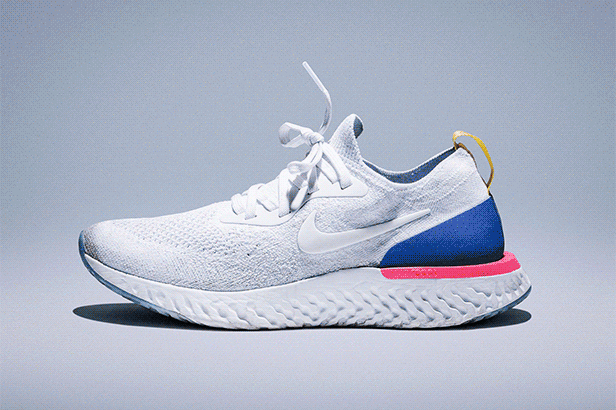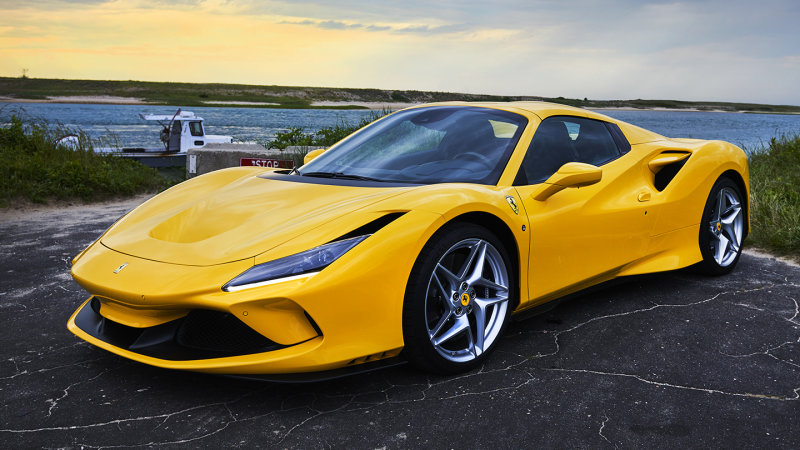2018 marks the 35th year of the Nike Air Zoom Pegasus, so what better time to launch a new version of the popular running shoe. Per Nike’s history, each franchise gets a facelift every year, and every two years, there’s a total overhaul. The Zoom Pegasus 35 is a revamp starting with the outsole all the way up to the tongue. It’s snappier than previous iterations, fast on foot and durable enough for a 10-miler. We took them for a spin to see how they compare to the Pegasus 34s.
The Good: Thanks to cutouts in the outsole, the Pegasus 35 is .2 ounces lighter than the 34. The mesh is more breathable, looks fresh and feels great. An update to the airbags underfoot provide a thin, yet firm layer of cushioning that stretches from heel to toe. Thanks to input from Mo Farah, the 2012 gold medalist in the 5,000 and 10,000 meters, the heel collar is higher, which makes for a faster-looking shoe.
Who They’re For: Everyone from 5k racers to marathoners can appreciate the neutral shoe. While the Nike Epic React works for a particular type of runner (someone who has a stable arch, needs zero structure and doesn’t pronate or supinate), the Pegasus 35 is more ubiquitous. I took the 35 for runs on trails, dirt roads and pavement, but enjoyed the shoes most on the back roads of upstate Vermont.
Watch Out For: The extended heel collar, created to help ease pressure on your Achilles tendon (you can thank Mo Farah for that design), might take a while to get used to. It can cause some rubbing in the beginning. The toe box is also decidedly more narrow as compared to the 34, which some testers have complained about.
While I didn’t experience these issues, it did take me roughly 11 miles to feel like my feet adapted to the sneakers. I played around with the fit quite a bit, testing out different ways of tieing the laces to adjust to just four toe eyelets as opposed to five. But once I hit those 11 miles, I felt like I could run forever.
Alternatives: There are a lot of differences between the Nike Air Pegasus 34s ($65) and the 35s, so be sure to test them out in stores before settling with the former model. Other similar running sneakers include the Asics Cumulus 19 ($120), Brooks Ghost 9 ($78) and Mizuno Wave Rider 20 ($90). The New Balance 880V7 ($115) and the Saucony Ride 10 ($72), also have similar neutral cushioning.
Review: The night I picked up the sneakers, I had the chance to chat with Chris Nuelle, an EKIN for Nike (a group of Nike employees tasked with brand storytelling and marketing), who has been running for Nike for two years. He walked me through all the changes to the Pegasus from bottom to top. The waffle outsole on the 35 is the same as the 34, just with a change in shape. On the 34s, the lugs are pentagonal, and roughly the same size from toe to heel, varying a little the closer they get to either edge. One complaint about the 34s was how rigid the outsole was, especially under the toe. On the 35s, the pentagonal shapes stretch and shrink from heel to toe, providing more flexibility in the outsole. The outsole is springy, yet stiff enough to keep your heel to toe energy transfer effortless.
The midsole has a Zoom bag throughout the entire shoe, unlike past models which only had a zoom bag in the heel or toe, or separate bags in each. And the airbag is the same shape as the elusive Nike 4%. The Cushlon foam is the same as what you find in the 34s.

The most significant changes are aesthetic-related. An engineered mesh upper is more breathable, with perforations you can see, starting in the toe and wrapping around the entire foot. During testing, I ran in everything from 50 degrees up to a sizzling 79, and never once felt the shoes were too hot. Paired with thick merino wool or thin performance socks, the shoes felt comfortable and airy. My feet sweat, but no more than expected on hot days.
The toe box on the 34s seems smaller, just because of the elimination of one toe eyelet. The 35s offer more room for foot flexion. Like I said earlier, it took me a while to figure out my perfect fit. During my first few shorter runs (a 3- and two 4-mile runs) I felt some pressure on the top of my left foot, directly under the laces, but by mile twelve, it disappeared.
Verdict: As a fan of the Pegasus 34s, I’m still impressed by the 35s. While it took a few runs for me to wear these in, the lighter weight and full airbag underfoot create a shoe that’s fast, yet semi-supportive. For a neutral runner, these kicks are comfortable all day long, whether you’re running or walking. The price is $10 more than previous versions, but you’re getting the elite look inspired by the 4% sneakers, as well as a shoe that’ll take you through track practices and long distance runs. While they’re not as bouncy as the Nike Epic Reacts, these shoes are ones I can see lasting me through marathon training and never look back.
What Others Are Saying:
• “This is a superior daily trainer. There is only one shoe we have reviewed this year that I like better. If you follow my reviews then you know my top shoe this year to date is the Nike Epic React. The Epic React doesn’t work for every runner though, while the Pegasus 35 will work for the majority of runners.” — Thomas Neuberger, Believe in the Run
• “The beveled heel helps with touchdown as you’re running, the collar is directed away from the Achilles tendon to make it more comfortable on your foot (you have Sir Mo to thank for that) and there’s a full-length Zoom airbag in the sole. Inspired by the Zoom Vaporfly 4% — a shoe that claims to improve your running efficiency by, you’ve guessed it, 4%— the sole offers improved cushioning and flexibility.” — Matt Hambly, Men’s Health UK
• “The Pegasus 35 bridges the gap between an elite athlete’s shoe and a mass-consumer buy. Not only in price (the Vaporfly 4% cost $250), but in fit, form, and function. It feels deluxe, but it’s robust enough to tackle a long endurance run one day and a sprint session the next. The Pegasus 35, in our opinion, is the running shoe release of spring 2018 that’ll give you the biggest bang for your buck. It doesn’t hurt that it’s a sharp-looking shoe at that.” — Brittany Smith, Men’s Journal
Key Specs
Offset: 10mm
Weight: 9.9 ounces
| |
Hot takes and in-depth reviews on noteworthy, relevant and interesting products. Read the Story





